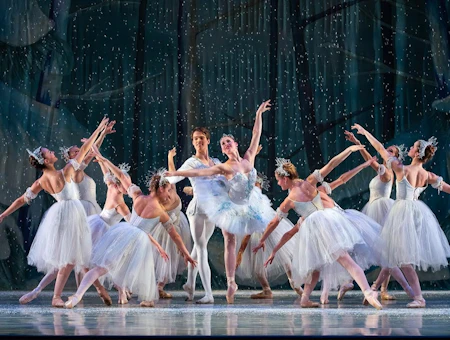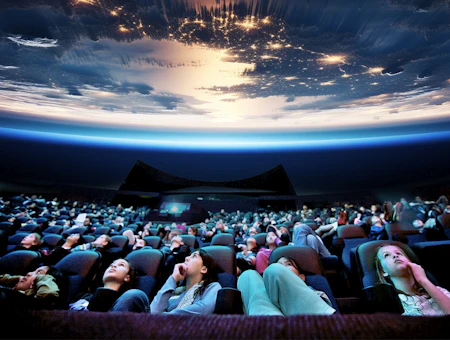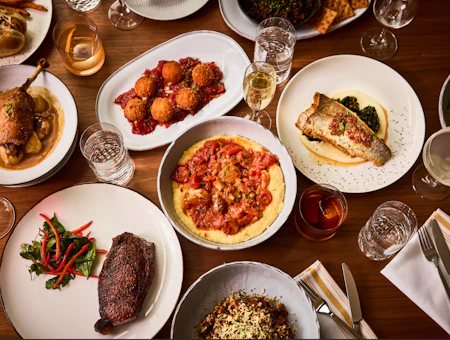My Charlotte: Dammit Wesley
Multi-disciplinary artist and creative Dammit Wesley uses his work and platform to provide context and commentary on the Black experience through the lens of pop culture.
by Tierany Griffin
A catalyst, connector and culturalist, Wesley has played an active, influential role in the southeast arts community for the past decade as the Founder and co-owner of BLK MRKT CLT, developing monthly minority-based art exhibitions and showcases, instructing hip hop-themed figure painting classes and working as a teaching artist for local institutions.

Tell us about yourself. How did you get to where you are today?
My story starts in Greenville, South Carolina. I had a severe stutter at a young age and I was really young when I realized it was easier for me to communicate with visuals versus words.
Growing up, I took part in several art programs in and out of school. After graduation, I went to Winthrop University and got my African-American Studies and Fine Arts. Unfortunately, after recognizing that technology had taken a vast leap from print-based to social media-based, I didn't have the technical skill set to lend me a job working as a graphic designer. So I had to get creative.
I made flyers and marketing materials for clubs, parties and events, and after realizing that the guys who were paying me were barely literate, I realized, “I can do that, too!” This was the inspiration behind BLK MRKT, which came to fruition after years of hosting artists and music showcases with my peers. For the first five years, DJ Fannie Mae and I curated many events around the city to highlight Carolina talent in general.
So when we were offered a spot at Camp North End, we realized that we had activated a whole community of Black artists that felt overlooked and we’ve been running ever since.

How did you learn your craft?
It was probably my senior year in college and I was reading Creative Loafing when I saw an ad for a Red Bull DJ battle. DJ Jazzy Jeff was going to be there. At the time, I didn't even know DJ Jazzy Jeff was like a “real” DJ. So when I saw him live, I was like, “Oh, this is nice!” because it felt less like a battle and more like a music history class to me. And in high school, you know, I was the guy you go to if you wanted a mix CD, so I had already taught myself how to make flashy graphics, so I decided to try my hand at DJing.
And as I got older, I realized there was value in having a DJ at art events, especially when it comes to like Black art events. For me, in particular, I wanted to make sure any event that I was hosting or had guests coming to felt more akin to them going to a club or a party versus attending something that a museum or a gallery — simply because those are historically Eurocentric spaces that did everything they could to exclude very particular people, i.e., me and my crowd. So whatever I could do to make that space feel familiar, I did, and learning how to DJ was one of the ways I could cut down on costs and get to know my audience a little bit better.

What can people do to support local artists such as yourself?
The number one thing you can do is open your wallet. Secondly, if you have connections or know people who have opportunities, give those out. For example, I know many artists in the city who — within two years — have gone from being obscure people that were just working in somebody's basement to now doing international art fairs.
Our community doesn't have that knowledge. They don't seem to have those resources, and without people gathering around us and making sure that we are growing beyond our comfort zones and even our patron's understanding, we're not going to get anywhere.
What inspired you to create the Durag Festival?
DuragFest is something that came along as a collaborative effort or an experiment with peers and friends of mine. Conceptually, I wanted to do an art exhibition that was just celebrating Blackness in the blackest way possible and there’s nothing blacker than a durag.
We had an event a couple of months after the Black Panther movie premier and as white people walked by and their children looked up, they were referring to Black women in durags as “princesses.” They were literally seeing them as Disney princesses in gowns. They looked very regal and it was lots of gold, jewelry and bedazzlement. And I believe that was one of the first times that I realized that we had the power to celebrate ourselves, the way we see ourselves, versus having to be observed by people that are inundated in our culture or understand the standards to which we hold things beautiful.

What makes Charlotte feel like home to you?
What I like about Charlotte is the history of Blackness that exists here. Charlotte is historically an urban, vibrant city. The history of Blackness that exists and existed here is excellent. Still, unfortunately, it isn’t being shared, documented or highlighted in a respectful way to the people that blazed the trail. So the least I can do is throw a durag festival in honor of all those people so that folks can come out and be the Black people they were supposed to be in this city.

What are some of your must-see attractions in Charlotte that you would recommend to friends and family?
Dupp & Swat, even if nothing is going on, you have to check them out. The Mint Museum (both Uptown and Randolph locations) simply because of their presence and the work they're doing in the community, Camp North End, Leah & Louise and Sucasa (Jasiatic Anderson).











